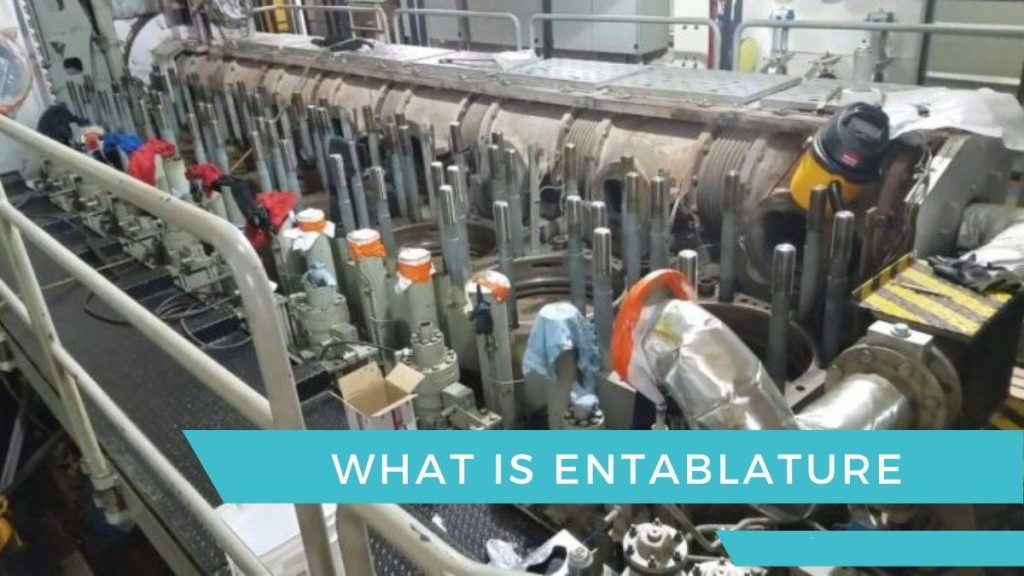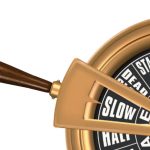An entablature is a part of the ship’s main engine. It is the housing which holds the cylinder liner, along with the scavenge air space and cooling water spaces. The entablature is usually made of cast iron.
Installing and Assembling an Entablature
While assembling or installing an engine in the ship, entablature can be fitted either by making casting for each cylinder of the engine and then bolting the mating surfaces together, or by casting in multi-cylinder units and then bolting them together.

Fitted bolts are used to align and bolt the “A” frame to the entablature. It is to note that the “fitted bolts” that are used to bolt entablature, A” frames and bedplate together are only for alignment purpose and not to resist stresses generated as a result of firing forces.
Damage to entablature can lead to loss of engine power and may also cause damage to crankshaft and other components.
The Entablature of the engine comprises of the cooling jacket for the cylinder liner where the high temperature combustion takes place. The water is passed around the liner trough this jacket which absorbs the heat of the liner and avoids thermal stresses.
The liner fitted in the entablature is provided with O’rings, which avoid leakage of jacket water in to the under piston space. Cylinder water in the entablature jacket enters from the bottom and leaves from the top to avoid formation of air pockets or air lock.
How to do Inspection of Entablature?
The entablature is additionally fitted with the liner and the cylinder head on the top. Therefore when the head and liner is removed, thorough inspection of the entablature must be carried out.
· Check the upper surface where liner face lands for cracks and deformation
· Check the condition of the inside of jacket for mud formation. Clean whenever the liner is removed.
· Check and clean the portion where o’ rings of the liner sits on the entablature jacket.
· Check for corrosion signs inside the water space.
· Check for salt deposits
· Check the mating surface of entablature and “A” frame for fretting.
· Check for cracks.
· Check for oil or water leakages near the mating surface.
· If there is fretting between “A” frame and entablature, tightness of the tie rods must be checked.
The entablature jacket inspection can be carried out without removing the liner and inspecting through the cover provided at the bottom of the jacket. Prior to opening the cover, the engine must be stopped along with the cooling water supply, inlet and outlet valve for cooling water supply should be shut and drain for the unit to be inspected must be open (air vent to be open to facilitate draining).


